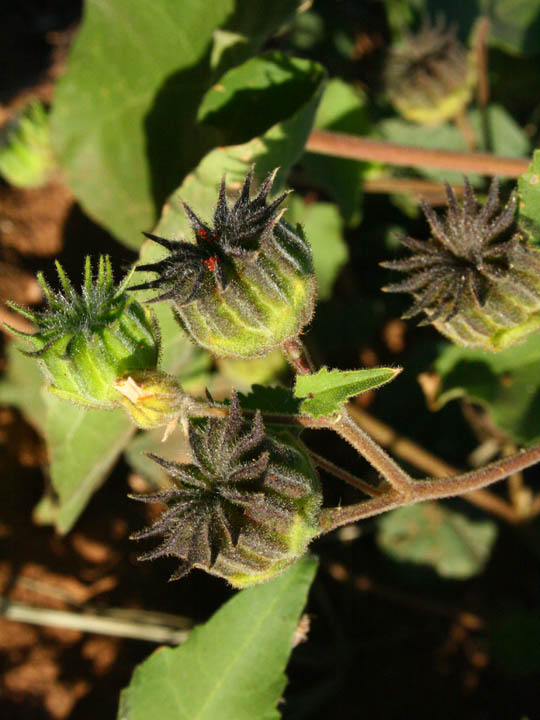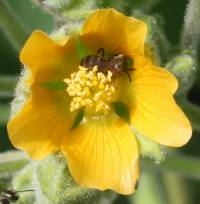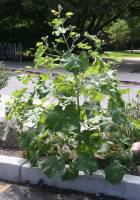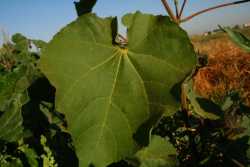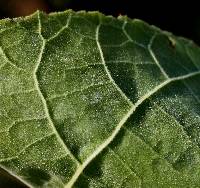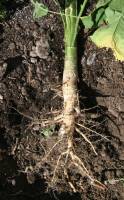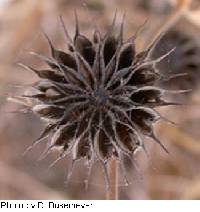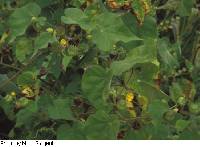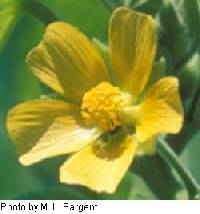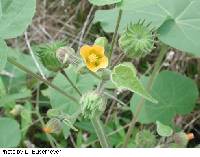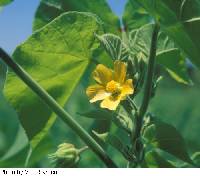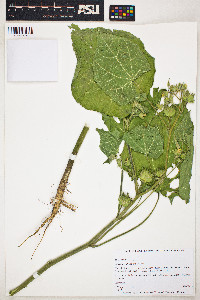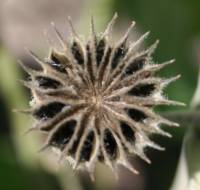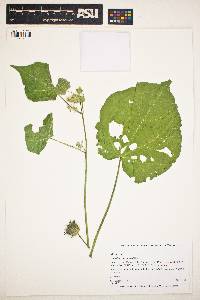Annual herb 0.5 - 1.5 m tall
Stem: stout, erect, branching, and softly-hairy throughout with forked or branched hairs.
Leaves: long-stalked, densely velvety-hairy, about as wide as long (10 - 20 cm), broadly heart-shaped, and often with tiny, sharp teeth along the edges.
Inflorescence: of stalked flowers in small branching clusters in the upper leaf axils, or the flowers single. There are no subtending bracts below each flower.
Flowers: yellow, 1.5 - 4 cm wide, radially symmetric, somewhat broadly cup-shaped.
Sepals: five, but fused for about half their length, then separating into broadly triangular lobes. The tube and lobes are both covered with a mixture of branched and unbranched hairs over 0.5 mm long.
Petals: five, yellow, 0.7 - 1.3 cm long, narrow at the base, and wide at the tip.
Stamens: numerous, but the filaments united into a tube for half their length, with the anthers protruding above.
Pistil: enclosed by the stamen tube, with one superior ovary, the style coming up through the stamen tube's center, then branching above into ten to fifteen, rounded stigmas.
Fruit: a 2 - 3 cm diameter ring of ten to fifteen, black, hardened, hairy, at least three-seeded, oblong or oval segments (mericarps) with a pointed, 4 - 5 mm long beak at the tip. The entire ring of fruit segments is surrounded by the persistent sepals, and falls as a whole structure, not separating from the central axis of the flower, nor separating into the individual segments.
Similar species: Abutilon theophrasti may be similar to some species in the genera Althaea, Malva, or even some small plants of Hibiscus, but all species in those genera have a series of bracts located just below the sepals of each flower. Other genera in the Malvaceae family that also lack these "sub-sepal" bracts have other distinctive differences from A. theophrasti. Napaea has lobed leaves, and smaller flowers in tighter clusters. Similarly, the leaves of Sida are either lobed, smaller, or longer than wide, and in our single species in the Chicago Region, the fruit sections have two beaks. The flowers of Anoda are different since they are normally bluish in color, but the leaves are also longer than wide.
Flowering: July to October
Habitat and ecology: Very common in cultivated fields, gardens, waste ground, and disturbed soil, typically in full sun.
Occurence in the Chicago region: non-native
Notes: This plant was brought over to North America from Asia, where it is an important plant for harvesting fibers (especially in northern China). It is now a nuisance weed for farmers of corn and soybean.
Author: The Field Museum

